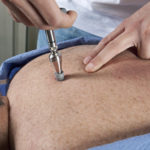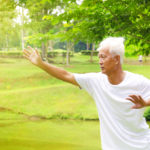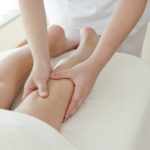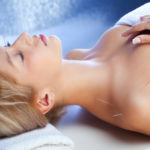Cranial Osteopathy, Craniosacral Therapy
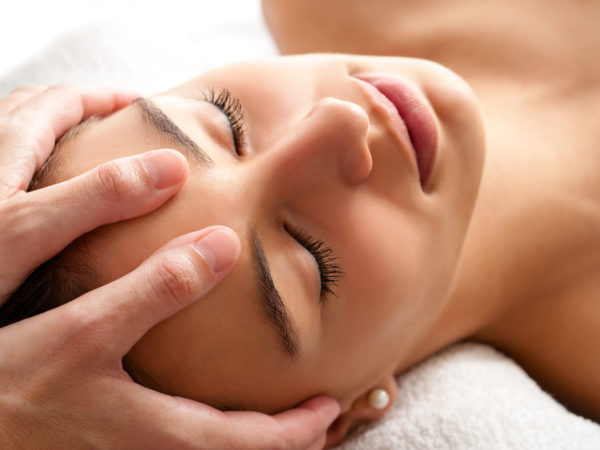
What is cranial osteopathy?
Cranial osteopathy (also called cranial therapy or craniosacral therapy) is one variety of osteopathic manipulative therapies. It stimulates healing by using gentle hand pressure to manipulate the skeleton and connective tissues, especially the skull and sacrum (the large, triangular bone at the base of the spinal column). Cranial osteopathy is based on the controversial theory that the central nervous system, including the brain and spinal cord, has subtle, rhythmic pulsations that are vital to health and can be detected and modified by a skilled practitioner.
About five percent of physicians in the United States are doctors of osteopathy (DOs), and fewer than 10 percent of them rely on manipulation as a main method of treatment. However, some medical doctors and dentists have had training in cranial osteopathy.
What conditions is cranial osteopathy used for?
Cranial osteopathy is used for a wide range of problems in both children and adults including constipation, irritable bowel syndrome, seizures, scoliosis, migraine headaches, disturbed sleep cycles, asthma, neck pain, sinus infections, TMJ syndrome, Ménière’s disease and ear problems, and for children with attention deficit hyperactivity disorder (ADHD) who have experienced birth trauma or head trauma. The American Cancer Society notes that while cranial osteopathy therapy has not been shown scientifically to be a treatment for cancer, it can help patients feel more relaxed by helping to relieve stress and tension.
What should one expect from a visit to a practitioner of cranial osteopathy therapy?
During a typical session, you may be asked first about your history of injuries and the circumstances of your birth, in addition to the usual questions about your symptoms, medical history, and lifestyle habits. As part of the physical exam, the practitioner may move your limbs and feel your spine, ribcage and cranium for areas of restricted motion. Treatment includes gentle hands-on manipulation of the cranial bones and the sacrum (tailbone), as well as other restricted areas of the body. The practitioner may use additional manipulation techniques as well, for example, to relax muscles around the joints and spine. The overall effect of a treatment session can be very calming. Some patients report pleasant tingling sensation throughout their bodies during treatment. The initial visit lasts 45 minutes to an hour, and any subsequent visits typically last about 30 minutes. During treatment, patients are fully clothed; they lie down, face up.
Practitioners of cranial osteopathy use their hands to gently free up restrictions in the movement of cranial bones and associated soft tissues and to stimulate the flow of the cerebrospinal fluid, which bathes all the surfaces of the brain and the spinal cord. Practitioners believe that distortions in the natural rhythms of the central nervous system may result from trauma of all sorts including birth trauma, childhood injuries, automobile accidents, even psychological trauma. (For years, mainstream medicine dismissed the idea – put forth in the 1930s by osteopath William Sutherland – that the cranial bones in the adult skull could move. However, researchers at Michigan State University’s College of Osteopathic medicine confirmed Sutherland’s theory in the late 1970s by showing cranial bone motion in X-ray films of the skulls of living subjects.)
Are there any side effects or conditions where cranial osteopathy should be avoided?
Few adverse effects have been reported. In one small study, five percent of patients with head injuries complained of feeling worse after treatment.
Is there a governing body that oversees or credentials practitioners?
The Osteopathic Cranial Academy, an international membership organization, provides training in cranial osteopathy to qualified health care practitioners including doctors of osteopathy (DOs), medical doctors and dentists, and international physicians with post-graduate training in osteopathy. However, non-US DOs and international physicians with post-graduate training in osteopathy must meet the standard set by the official registry of their respective countries in order to be granted affiliate membership in The Osteopathic Cranial Academy. The Academy awards a Certificate of Proficiency to members who have completed the intensive postgraduate studies in cranial osteopathy it offers.
How does one get in touch with a practitioner of cranial osteopathy?
The Osteopathic Cranial Academy can help you locate certified professionals in cranial osteopathy in your area. Be aware that some massage therapists and physical therapists offer what they call craniosacral therapy, but they haven’t had the same comprehensive training and don’t possess the same medical expertise as DOs and other health care professionals certified by the Cranial Academy.
Are there other therapies that might work well in conjunction with cranial osteopathy therapy?
Cranial osteopathy therapy can work as an adjunct to other medical, dental, osteopathic, and chiropractic treatments. According to the Cranial Academy, cranial osteopathy offers a gentle treatment for pain in patients undergoing other kinds of therapy who are too acutely sensitive to tolerate other hands-on approaches.
What is Dr. Weil’s view of cranial osteopathy?
Dr. Weil encountered cranial osteopathy when he met Dr. Robert Fulford, an osteopath who relied on manipulation alone for treating a variety of diseases. Dr. Weil has described Dr. Fulford as a skilled practitioner of cranial osteopathy who could detect subtle movements within the central nervous system and its associated structures through gentle palpation of the cranial bones.
Dr. Weil continues to recommend cranial osteopathy therapy for many conditions including colic in babies, earaches and hyperactivity in children, for infants who are not sucking well during breast feeding, and following a difficult delivery to make certain the bones and soft tissues of the infant’s head are in proper alignment (treatment frees up restrictions in movement and promotes normal functioning of the nervous system, as well as optimal flow of blood and lymph). He also recommends cranial osteopathy for treatment of:
- Migraine headaches,
- Disturbed sleep cycles
- Asthma
- Neck pain
- Sinus infections
- Temporomandibular joint (TMJ) syndrome
- Ménière’s disease
- Ear problems in adults.
For more information about cranial osteopathy, Dr. Weil recommends reading Dr. Robert Fulford’s book, Dr. Fulford’s Touch of Life (Pocket Books, 1997).






